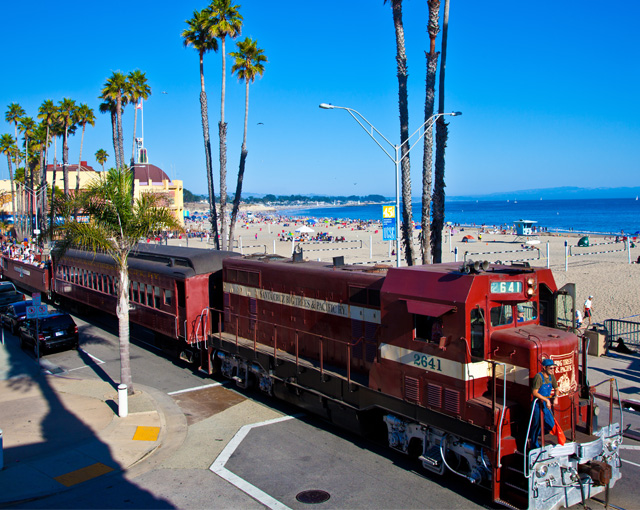An abundance of natural resources, combined with a mild climate, have provided a hospitable environment for activity in the Santa Cruz area since the time of its first inhabitants. For further resources, you can explore the Santa Cruz Public Library.
The oldest known settlement was in the Scotts Valley area. Extensive archaeological research indicates that people lived here some 12,000 years ago, pre-dating the pyramids of Egypt! These early people lived in small groups, eating seeds and following migratory game.
The Ohlones migrated to the area from the Sierra Nevadas roughly 8,000 years ago. They settled along the coast from Marin to Monterey County and based their livelihood on the abundant marine resources: seals, shellfish, otter, salmon and birds.
In 1769 the men of the Portola Expedition became the first non-natives to traverse the coast of Santa Cruz County, exploring the country and naming the streams and rivers they encountered.
During 1791, after the discovery of the Monterey Bay, Father Lausen, who led the missionary system following Father Serra’s death, raised a cross where Mission Santa Cruz, or “Holy Cross,” was to be built. On September 25, 1791, the Mission Santa Cruz was completed as the 12th California Mission.
Between 1835 and 1840, following Mexican independence from Spain, the mission establishment was secularized. The 35 adobe structures on Mission Hill, which had been the core of the mission settlement, became the nucleus of the early pueblo (town) of Santa Cruz and were gradually converted to commercial uses.
An increasing number of foreigners (Americans) were attracted to the area in the late 1840’s. The Yankee invasion was completed with the Gold Rush of 1849 and statehood for California in 1850. Adobes disappeared to make way for tall Protestant church spires and white picket fences.
The early industries of the area drew heavily on the seemingly unlimited natural resources. Lumber camps were established in the redwood forests of the Santa Cruz mountains, concentrating in the San Lorenzo Valley and Aptos areas. The McCrary family, who came to Davenport in 1863, still operates Big Creek Lumber Company, one of only two mills left in Santa Cruz.
Besides lumber, fine grade limestone was the source for critical building materials. The largest limestone industry was operated by Henry Cowell on what is now the UCSC campus. Its earliest quarry dates from the 1850’s.
Salz Tannery, the oldest operating tannery in California, is the last survivor of what was once a major industry in the county. At one time there were eight or nine active tanneries.
From the 1880’s through the turn of the century, a wide variety of agricultural industries were established and took hold throughout the county. Today, the large Wilder Ranch State Park with its historic dairy ranch complex is a reminder of that era.
In the Santa Cruz mountains, early vintners put to use their pioneering efforts to produce fine California wines. Fontenay Vineyard on Vine Hill and the Ben Lomond Wine Company in Bonny Doon provided leadership both locally and statewide.
In South County, apples became the main agricultural product and have retained their importance. Other agricultural specialties in the area have included artichokes, brussels sprouts, strawberries and flowers.
The arrival of the railroad made it possible to benefit from the area’s natural resources in a completely new way; thus the tourism industry was created. Early conservation efforts, led by Andrew Hill, resulted in the creation of the first state park at Big Basin in 1902.
The most ambitious effort to attract the tourist was made by Fred Swanton. When Swanton’s 1904 casino burned down in 1906, he responded with a second version which is the one we know today – the Santa Cruz Beach Boardwalk. The Looff Carousel was installed in 1911 and the Giant Dipper roller coaster was added in 1923; both are National Historic Landmarks.
The mid-60’s brought the establishment of the University of California campus in Santa Cruz. The University acted as a focus for alternative lifestyles and new political trends.
The next major change was the Loma Prieta Earthquake in October 1989. The earthquake caused severe devastation to the homes and businesses throughout Santa Cruz County. Since that time, the County has rebuilt most of the buildings and is well on its way to economic prosperity once more.
The last 15 years have seen an impressive flourishing of all the arts, with the vitality of creative efforts finding both local support and national recognition in crafts, fine arts, dance, music, theater and writing.


